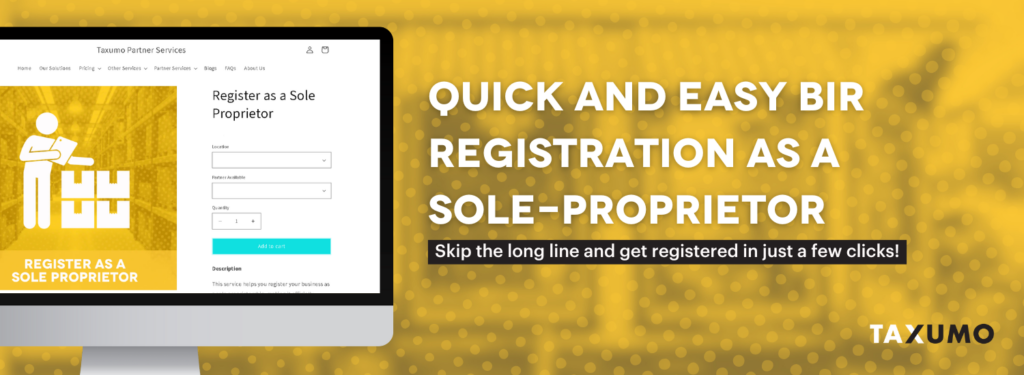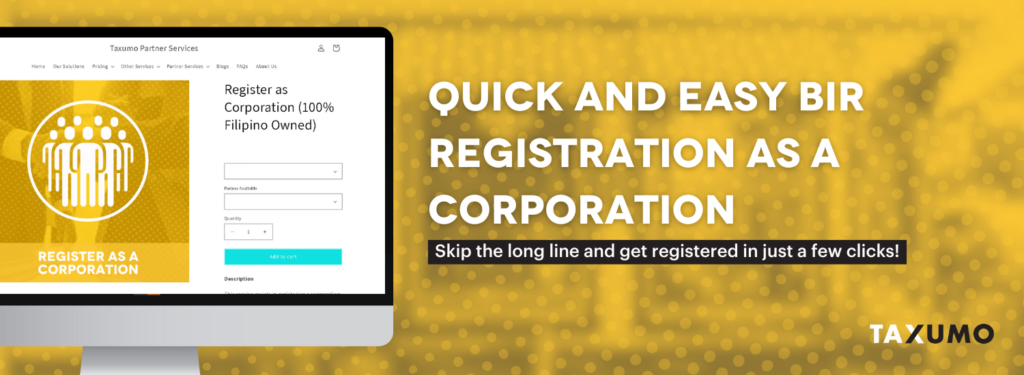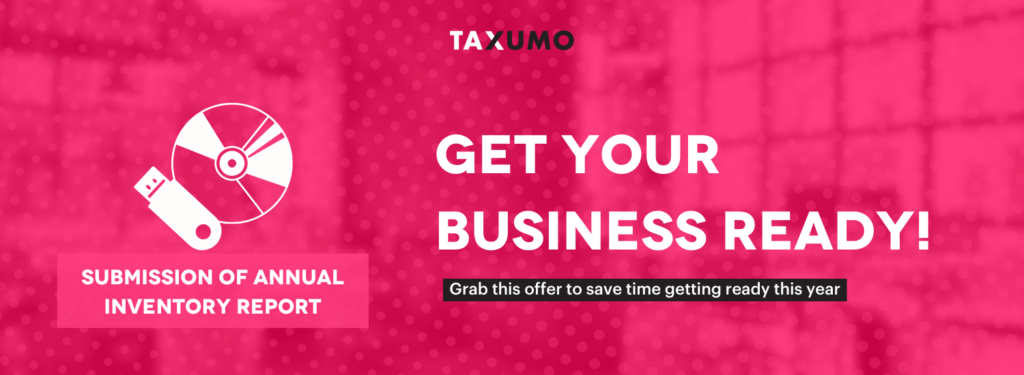In the digital age, selling online provides wide of opportunities for entrepreneurs. Whether you’re using social media platforms or e-commerce giants like Lazada and Shopee, understanding the taxes of your business activities is crucial. This guide will cover essential steps for registering as either a sole proprietor or a corporation and delve into the specific online sellers taxes in the Philippines.
1. Registration as a Sole Proprietor or Corporation
Why Register as a Sole Proprietor? As an online seller, there are usually two choices of business structure that you’d want to consider — registering as a sole proprietorship or as a corporation. Registering as a sole proprietor is often seen as the simplest form of business structure. It’s typically easier to set up and requires less paperwork and compliance compared to a corporation. This makes it ideal for new entrepreneurs who are just starting out and testing the market.
Differences Between Sole Proprietorship and Corporation
- Liability: Sole proprietors face unlimited liability, meaning personal assets can be at risk in the event of business failure. In contrast, a corporation is a separate legal entity, which provides liability protection to its owners. The issue of liability will come into play though when loans have not been paid.
- Taxation: Sole proprietors are taxed on personal income rates, which can be beneficial if earnings are modest. Corporations, however, are taxed at corporate rates and may benefit from different tax incentives.
- Control and Formalities: Sole proprietors have complete control over decision-making processes without the need for board meetings or formalities. Corporations require a more structured approach, involving a board of directors and compliance with more rigorous regulatory requirements.
Steps to Register as a Sole Proprietor:
- Department of Trade and Industry (DTI): Register your business name to ensure it’s unique and not already in use.
- Local Government Unit (LGU): Obtain the necessary business permits and licenses from the city or municipality where your business is located.
- Bureau of Internal Revenue (BIR): Register for online seller taxes, acquire your Certificate of Registration (COR), Authority to Print (ATP) and apply for BIR accredited sale invoices and stamped Books of accounts.

Steps to Register as a Corporation:
- Securities and Exchange Commission (SEC): Register your business name and set up your corporation, ensuring compliance with all regulatory requirements.
- Local Government Unit (LGU): Similar to sole proprietorship, secure local business permits and licenses.
- Bureau of Internal Revenue (BIR): Register for corporate taxes, secure your COR, Authority to Print (ATP) and apply for BIR accredited sale invoices and stamped Books of accounts.

2. Zoom in on Online Sellers Taxes
Types of Online Sellers Taxes:
- Income Tax (1701/1701Q for Sole Proprietors and 1702RT and 1702Q for Corporations): Based on the net income of your business, which is revenue minus allowable expenses. After filing AND if you received 2307 Forms or Certificate of Creditable Tax Withheld forms, you are also required to submit an attachment called Summary Alphalist of Withheld Taxes or SAWT, which is a list of the people / entities that gave you these 2307 Forms.
- Value Added Tax or VAT (2550Q): If your sales exceed the VAT threshold, currently set at Php 3,000,000 gross revenue annually, you are required to register and pay VAT. After filing VAT, you are also required to submit an attachment called Summary List of Sales and Purchases or SLSP.
- Percentage Tax (2551Q): For those who do not surpass the VAT threshold, a percentage tax applies instead.
- Expanded Withholding Tax (0619e, 1601e, 1604e): If you have these in your Certificate of Registration, you are required to withhold tax from the payments to your suppliers, and file and remit it directly to the BIR via these forms. After filing, you are also required to submit an attachment called Quarterly Alphalist of Payes or QAP, which is a list of the people / entities that you withheld from. You will also need to give the people and entities that you paid a form 2307 to prove that you remitted the withheld amount to the BIR.
Pro-tip: The preparation, filing and payment of these forms can all be done via Taxumo. Sign up now at https://www.Taxumo.com.
Income Declaration
It’s mandatory by law to declare all income earned, regardless of the source. This means that revenue from online sales, whether through your website or platforms like Lazada and Shopee, must be reported to the BIR.
Explaining the 1% of Withholding Tax of Sales
You may have seen this article that we released when the law was passed: https://www.taxumo.com/blog/online-seller-tax/
The introduction of the 1% Withholding Tax for online sellers in the Philippines marked a strategic move to simplify tax compliance and enhance fairness in the e-commerce landscape. This tax functions as a pre-payment towards annual income taxes, where 1% of 50% of the transaction volume of each online transaction is withheld by marketplaces and remitted to the Bureau of Internal Revenue (BIR). Marketplaces will in turn give the form 2307 to the sellers that they withheld from.
You’ll need to submit this document also the the platforms where you are selling: https://www.taxumo.com/sworn-declaration-of-online-sellers/.
Inventory List Compliance for Online Sellers
Aside from filing and paying the correct online sellers taxes, maintaining an accurate inventory list is something you needs to be done. It’s not just good business practice; it is a requirement for online sellers in the Philippines under the Bureau of Internal Revenue (BIR) regulations. This list plays a critical role in tax compliance and can impact the financial assessments of your business.
What is an Inventory List? An inventory list is a detailed record of all the products you have in stock at the end of your fiscal year. This must include descriptions, quantities, and the value of each item available for sale. The purpose of maintaining such a list is twofold: it aids in the accurate reporting of your Cost of Goods Sold (COGS) on your tax returns, and it ensures compliance with BIR requirements for inventory reporting.
Requirements for Inventory List Submission: Every online seller must prepare and submit an inventory list annually to the BIR. The list should be submitted within thirty days after the end of the fiscal year. If your business follows the calendar year, the deadline would typically be by January 30th of the following year.

Steps to Prepare an Inventory List:
- Record Keeping: Throughout the year, maintain detailed records of all inventory purchases and sales. This includes dates of transactions, quantities, prices, and total sales values.
- Year-End Inventory Count: Perform a physical count of all unsold inventory items as of the last day of your financial year. This helps verify the quantities and conditions of goods reported.
- Valuation: Assess the cost or market value of the inventory at hand. It’s important to use a consistent valuation method each year, whether it’s First In, First Out (FIFO); Last In, First Out (LIFO); or a Weighted Average Cost method.
- Documentation: Compile the inventory details into a formal list that aligns with the BIR’s format. Ensure that it is clear, organized, and includes all required information.
Conclusion
Registering your online selling business properly not only ensures compliance with Philippine tax laws but also positions your business for long-term success. Understanding and fulfilling your online sellers tax obligations can prevent legal issues and hefty fines, contributing positively to your business reputation and growth. Whether you choose to operate as a sole proprietor or a corporation, taking the right steps towards registration and tax compliance is fundamental for any entrepreneur venturing into the world of online sales.
